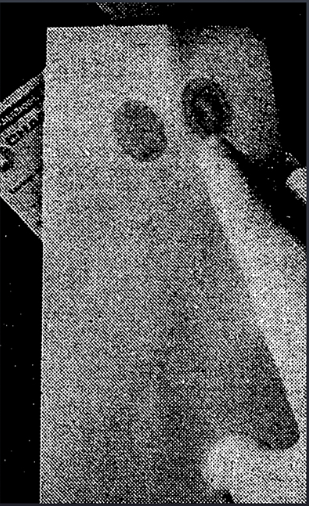The Seventies Check Fraud Boom…Can We Learn from History
- Check fraud is not new -- it boomed in the 1970s
- By 1977, banks responded with multiple anti-fraud tactics
- Are there lessons modern financial institutions can learn from the '70s?
FrankonFraud takes us back to the days of cable TV, eight-track tapes, and leisure suits - the 1970s.
The 1970s were hard times in fraud. The US was going through an economic recession, and inflation was raging.
And many people resorted to fraud. Banks reported an explosion of fraud in the mid-70s as more people turned to fraud to get by.
Indeed, check fraud reached $4 billion by 1976 -- equivalent to over $20 billion today, and not far from what banks are now losing. Banks tried collecting thumbprints on the back of checks, but customers understandably were hesitant to get ink all over their hands.

Source: FrankOnFraud
By July of 1977, banks had started to figure out new and clever ways to stop fraudsters, and a new technology was released.
The New York Times reported on it. And while it probably wouldn’t be much of a silver bullet today, it apparently worked at the time.
Banks in New York tested a new "Touch Signature" device in 1977 that allowed customers to leave fingerprints on checks instead of messy ink blots. This helped deter fraudsters psychologically -- there was an actual risk of being caught.
The $33 device paints two small ovals of chemicals on any absorbent material, such as a check. The customer touches one, then the other oval, and leaves a clear fingerprint on the check, and to his surprise, there is no messy ink blot on his finger.
A Temporary Respite
Check fraud did not by any means disappear after "Touch Signature" was introduced. In fact, many experts say that check fraud peaked in the mid 90's, where estimates put check fraud losses somewhere between $10B - $50B per year.
However, losses did begin to decline as checks were used less over the next 15 years and new tech was developed including EWS, positive pay, and even OrboGraph's own Sereno image analysis technology.
Until now...
As we all know, check fraud has boomed over the past few years, with many experts pointing to the introduction of EMV chips in 2014/2015 as the catalyst to the modern day check fraud challenge. Since then, we've seen check fraud explode, with some experts putting annual losses at nearly $50B per year.
Lessons from the Past
So, what can modern financial institutions learn from the 1970s -- besides how eight-track tapes used to "click" right in the middle of songs?
We can once again look towards what impacted check fraud back in the 70's: Technology.
In the 70's, it was "Touch Signature." In the 90's-00's, it was EWS, positive pay, etc. In the late 2010's-early 2020's, its AI and machine learning. We've seen a revolution in check fraud detection; transactional analysis systems are being replaced with behavioral analytics powered by AI. And, of course, we have image forensic AI replacing traditional OCR image analysis to analyze checks. Banks that have transitioned from legacy systems and integrated these new technologies have seen major decreases in check fraud losses -- with some reducing losses by 95%.
The lesson is clear: Integrating the latest technologies is the best way to reduce check fraud losses. Effective tech is there, but it is on the banks to invest.

